URA Helps Combat COVID-19 with Smart Innovations
The COVID-19 pandemic has disrupted the whole world in unprecedented ways. In the face of challenges under the new normal, every country is working resiliently to combat the disease. Having been adopting innovative technology at various fronts, the Urban Renewal Authority (URA), in collaboration with industrial partners, strives to develop innovative devices adopting advanced technologies like Internet of Things (IoT) and big data applications to improve buildings hygiene and uplift the quality of living environment.
Hence with Air Induction Units in the near future, more fresh air can be brought into the redeveloped communal facilities benefitting residents of Kwun Tong; with UVC (Ultraviolet-C) sterilisation device for the vent pipes at roof levels and the U-trap Refill Automator, households are protected against the passage of virus through the drainage pipes; and with “Health Code”2.0 the mobile alert application, URA staff can avoid being exposed to buildings with COVID-19 infections, and show their virus test results to residents during freezing surveys offering greater assurance to the public. It is with the hope that these smart technologies can benefit different businesses as well as people from all walks of life by providing solutions for future pandemic challenges, thus enhancing the society’s overall capability to fight against the virus.
URA Alerts Staff to COVID-19 Exposure Risk with “Health Code” 2.0
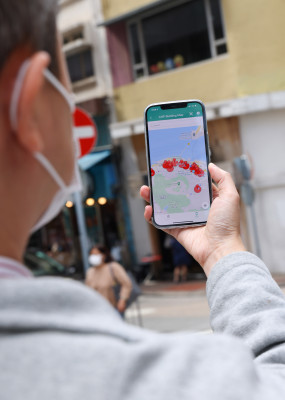 Incorporating the list of buildings with confirmed COVID-19 cases announced by the Government and facilitated by the Global Positioning System (GPS), the "Health Code"2.0 mobile app alerts staff to the buildings affected.
Incorporating the list of buildings with confirmed COVID-19 cases announced by the Government and facilitated by the Global Positioning System (GPS), the "Health Code"2.0 mobile app alerts staff to the buildings affected.
On the commencement of redevelopment projects, the URA would conduct freezing surveys with affected tenants. While it is important to safeguard the health of both the interviewers and the affected tenants in the project area during the pandemic, the URA has developed the “Health Code” mobile app to send alerts on potential COVID-19 exposure. With the app, interviewers can also show their negative results of Deep Throat Saliva Test to tenants. Incorporating the list of buildings with confirmed COVID-19 cases announced by the Government and facilitated by the Global Positioning System (GPS), the app generates alerts to remind staff not to enter the buildings affected. Notifications will be sent when they are within 200 metres of a building with confirmed or probable cases of COVID-19, so they can keep a distance and remain safe.
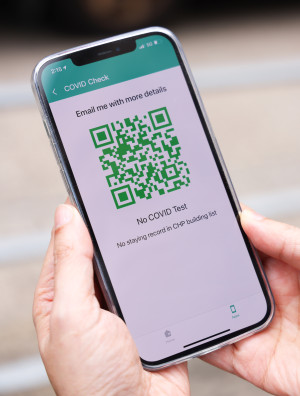 The green codes are for URA staff who are tested COVID negative and have not entered buildings with infection cases.
The green codes are for URA staff who are tested COVID negative and have not entered buildings with infection cases.
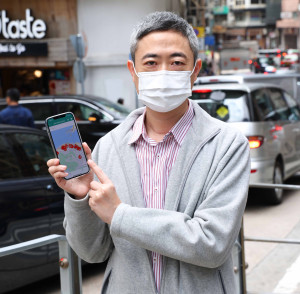 Jack hopes the "Health Code" mobile app can offer greater assurance to colleagues who need protection from infection risk.
Jack hopes the "Health Code" mobile app can offer greater assurance to colleagues who need protection from infection risk.
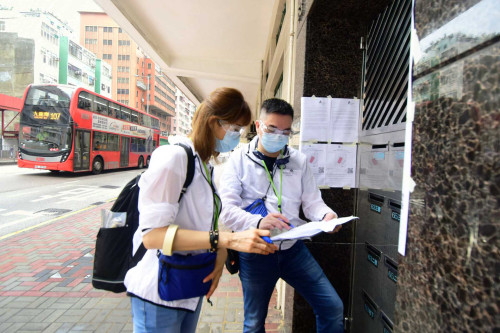 It is vital to ensure URA staff are protected from COVID-19 infection risk before and after conducting freezing surveys on the commencement of redevelopment projects.
It is vital to ensure URA staff are protected from COVID-19 infection risk before and after conducting freezing surveys on the commencement of redevelopment projects.
The URA’s “Health Code” app has been well received since its launch. An upgraded version 2.0 will be released early this year, offering more assurance on the protection of privacy and a more user-friendly interface which displays data of the affected buildings in map view with search function. The upgraded app version will also enable tenants to track the health reporting status of the URA staff through a three-colour display of green, yellow and red.
To tackle the problem of indoor positioning, the team is now considering different options, including the use of Bluetooth to transfer indoor location data to other smartphones. According to Jack Lau, Senior Manager (Information Technology) of the URA, more tests are needed to be run to ensure accuracy. “We are pleased to share our experience with the Government and the industrial partners. Together we can complement one another's effort in combating the virus.”
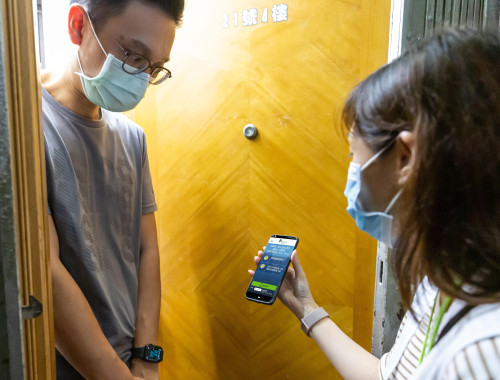 A URA staff reassures a tenant of her health condition by showing the negative COVID test result with the "Health Code" mobile app.
A URA staff reassures a tenant of her health condition by showing the negative COVID test result with the "Health Code" mobile app.
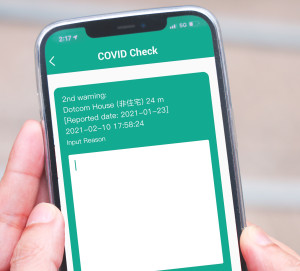 After receiving the COVID-19 exposure risk alert, URA staff are able to record details of their visits with the app including locations and persons they have come into contact with.
After receiving the COVID-19 exposure risk alert, URA staff are able to record details of their visits with the app including locations and persons they have come into contact with.
